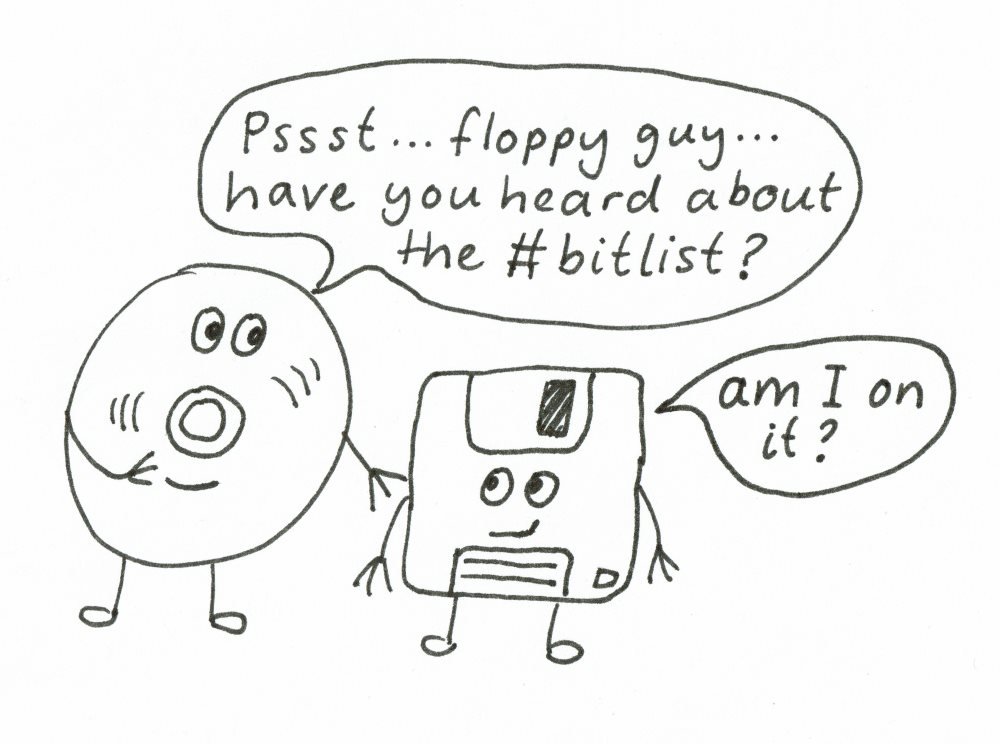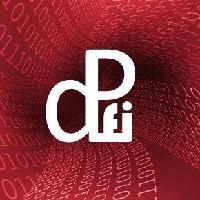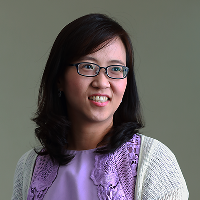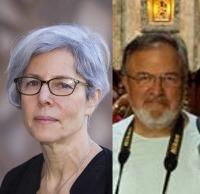Blog
Unless otherwise stated, content is shared under CC-BY-NC Licence
What we learned from Leren Preserveren
Frans Neggers is Digital Archivist at Het Nieuwe Instituut, and Project Manager and Trainer for Leren Preserveren
What should teaching heritage professionals about digital preservation be about? Autumn 2016 we - the Dutch Digital Heritage Network (DDHN) and Het Nieuwe Instituut (Rotterdam) - started developing Leren Preserveren (Learning Digital Preservation). We commissioned a professional to make a educational design. Decided was that it should become a blended learning environment for online students and with a group training. The target group was defined as practitioners that maybe don’t know too much yet about digital preservation or don’t know how to apply their knowledge. So it does not serve the more experienced practitioners who already know ‘how to’, nor the ones who are looking for answers to specific problems. Then all things to be learned had to be brought within a logical learning process. This resulted in a three module setup (learning to speak the language of digital preservation, becoming able to consider digital preservation in your own situation and learning to take the first steps). Important part of the group training were the module assignments as well as the expert sessions and exercises.
Digital Preservation and the Grand Gallery of IT Evolution
Eng Sengsavang is Reference Archivist for United Nations Educational, Scientific and Cultural Organization (UNESCO) in Paris, France
Last autumn, I moved to Paris to take on the role of Reference Archivist at the United Nations Educational, Scientific and Cultural Organization (UNESCO). My morning commute begins on a network of streets named after some of France and Europe’s prominent 18th-century naturalists. Rue Geoffroy Saint-Hilaire takes me past the Jardin des Plantes, site of the National Museum of Natural History (MNHN). The MNHN houses, among other displays, the Gallery of Evolution, an immense space exhibiting varieties of taxidermied animals. On the ground floor, an African elephant heads a procession forming the centerpiece of the ‘grand gallery,’ so-designated in French.
What if … your smartphone movies were suddenly all erased?
Brecht Declercq is Manager of Digitisation and Acquisition at VIAA, the Flemish Institute for Archiving in Belgium
There it is, lying next to you. Or maybe it is in your handbag or pocket. It may still be on your bedside table. Or your children are messing with it. Yesterday you used it to make some video clips. From your partner, your parents, your children, your BFF or just from the car before you. You probably didn’t think about it, but you documented your life in images and sounds. Some clips you erased quickly ... they better be not saved! Others are very valuable to you. Your 3-year-old granddaughter pressing a wet kiss on your camera lens. The champions celebration of the hockey team of a dear friend. Grandpa's voice at the birthday party ... three weeks before he died unexpectedly.
BitList 2018: The Global List of Digitally Endangered Species
 The 2018 Revision of The BitList offers a chance to update and review progress since initial publication in 2017. It was always intended as an interim statement that identified major changes or trends but offering commentary rather than a comprehensive review. It designed around the commitment that the DPC makes to the Digital Preservation Awards in alternate years, recognizing that the capacity for a full review would be limited in Autumn 2018. However, the pace of change is also relatively slow so the appetite and impact of an annual revision would be limited.
The 2018 Revision of The BitList offers a chance to update and review progress since initial publication in 2017. It was always intended as an interim statement that identified major changes or trends but offering commentary rather than a comprehensive review. It designed around the commitment that the DPC makes to the Digital Preservation Awards in alternate years, recognizing that the capacity for a full review would be limited in Autumn 2018. However, the pace of change is also relatively slow so the appetite and impact of an annual revision would be limited.
Authenticity of The Electronic Records: Presenting The Context
Özhan Sağlık is Lecturer at Bursa Uludag University in Turkey
This is my hard drive, and it only makes sense to put things in there that are useful. Really useful. Ordinary people fill their heads with all kinds of rubbish. That makes it hard to get at the stuff that matters. Do you see?" Sherlock Holmes, Season 1, Episode 3.
Archives are the banks of semantic capital (Floridi, 2018; Gollins, 2018) and we can ensure the intellectual control over this capital by context which is everything in digital archiving (Sheridan, 2018).
On the National Archives building of the United States it is written that “This building holds in trust the records of our national life and symbolizes our faith in the permanency of our national institutions” (National Archives and Records Administration, 2018). This sentence is valid for every country. Archives hold the trust for records whether they are physical or electronic.
Staying on Target: Reflections of a Digital Preservation Business Analyst
As Rosetta’s business analyst, I’ve always positioned myself on the receiving end of this blog. The ever-growing experience and different perspectives of digital preservation expressed in the stories shared here - and elsewhere - has significantly contributed to my ability to provide informed recommendations and decisions concerning the product’s roadmap and feature set. Therefore, when approached to contribute a post for this World Digital Preservation Day, I was ambivalent: My eagerness to contribute to this conversation seemed at odds with the product-oriented type of knowledge I can offer, which many would find uninteresting, if not inappropriate. After mulling over this for a while, I decided to share a recent dilemma I’ve been facing, with the hope that it will resonate well with the, er, designated community.
10 Years of Digital Preservation Collaboration in Finland
Heikki Helin is Senior Technology Coordinator for Digital Preservation Services at CSC - IT Center for Science Ltd in Espoo, Finland
Back in 2008, the National Digital Library of Finland (NDL) initiative was formed within the remit of the Ministry of Education and Culture of Finland. The initiative aimed at creating a nationally unified structure for contents and services ensuring the effective and high-quality management, dissemination, and especially digital preservation of cultural digital information resources. The basis for the NDL was formed by libraries, archives and museums (partner organisations).
In the early days of the NDL, it was decided that a centralized and shared digital preservation service should be created. It was estimated that common infrastructure and services reduces costs, increases system integration, strengthens cooperation, and brings the practices of partner organisations closer together. Besides technical solutions, the collaboration between partner organisations was an essential goal of the NDL.
Preserving digital anthropology resources at the Princess Maha Chakri Sirindhorn Anthropology Centre
Wachiraporn Klungthanaboon is Lecturer at Department of Library Science, Faculty of Arts, Chulalongkorn University and Sittisak Rungcharoensuksri is Researcher at the Princess Maha Chakri Sirindhorn Anthropology Centre
Learning the human behaviours and cultures in a particular community and time may not easily be done through the only lens of printed resources. The Princess Maha Chakri Sirindhorn Anthropology Centre (SAC), founded in 1991, is one of the most leading research centres in Thailand in the accountability of gathering and providing anthropological data to foster education and research in anthropology and archaeology in Thailand.
The SAC collaborates with local museums and communities across the country. The SAC has developed a digital platform for collecting, organizing, and disseminating gathered data and research output to the public with the aims of educating and preserving ritual practices, festivals, and other cultural expressions.
CIE TC8-15: Colour Imaging for Digital Preservation
Robert Buckley and Melitte Buchman are members of CIE TC8-15 – Archival Colour Imaging Technical Committee where Melitte is the Chair.
CIE TC8-15 is the CIE Technical Committee on Archival Colour Imaging. Overall the CIE is a technical, scientific and cultural non-profit organization in the field of light and lighting, encompassing fundamental subjects as vision, photometry and colorimetry. What does this have to do with the DPC and digital preservation? To the DPC, digital preservation refers to the series of managed activities necessary to ensure continued access to digital materials for as long as necessary. Basic activities are the good capture of physical originals and keeping the digital data safe and secure. CIE TC8-15 exists in the zone where the two organizations overlap for the accurate capture (or digitisation) of colour originals.
The TC’s Terms of Reference are “to recommend a set of techniques for the accurate capture, encoding and long-term preservation of colour descriptions of digital images that are either born digital or the result of digitising 2D static physical objects including documents, maps, photographic materials and paintings.”
A Case Study – WhatsApp Records Capture
Jingwen Yang is Records Management Officer for the United Nations Framework Convention on Climate Change (UNFCCC) in Bonn, Germany
Digital technologies are radically transforming business practices in the workplace as organizations become more mobile and virtual. Led by the increased prevalence of smartphones and BYOD (Bring Your Own Device) in organizations, more and more employees are turning to consumer messaging apps to collaborate with their colleagues and customers. Although an organization can benefit from this adoption, this also generates a huge amount of unstructured data outside of the technical platform managed by the organization, creating new challenges in digital records management, information security and information privacy protection.
Among a diverse landscape of messaging apps, WhatsApp stands out as one of the most popular: in 2018, WhatsApp reported more than 450 million daily active users, and it has been downloaded and installed by over 1.2 billion people worldwide. WhatsApp provides fast, simple, and secure services at no cost, allowing users to send text messages, voice messages, pictures, documents and other files as well as place voice calls and video calls to other WhatsApp users, all for free. It is expected that the unstructured data generated by WhatsApp alone will double in volume within the next 4 years.






















































































































































